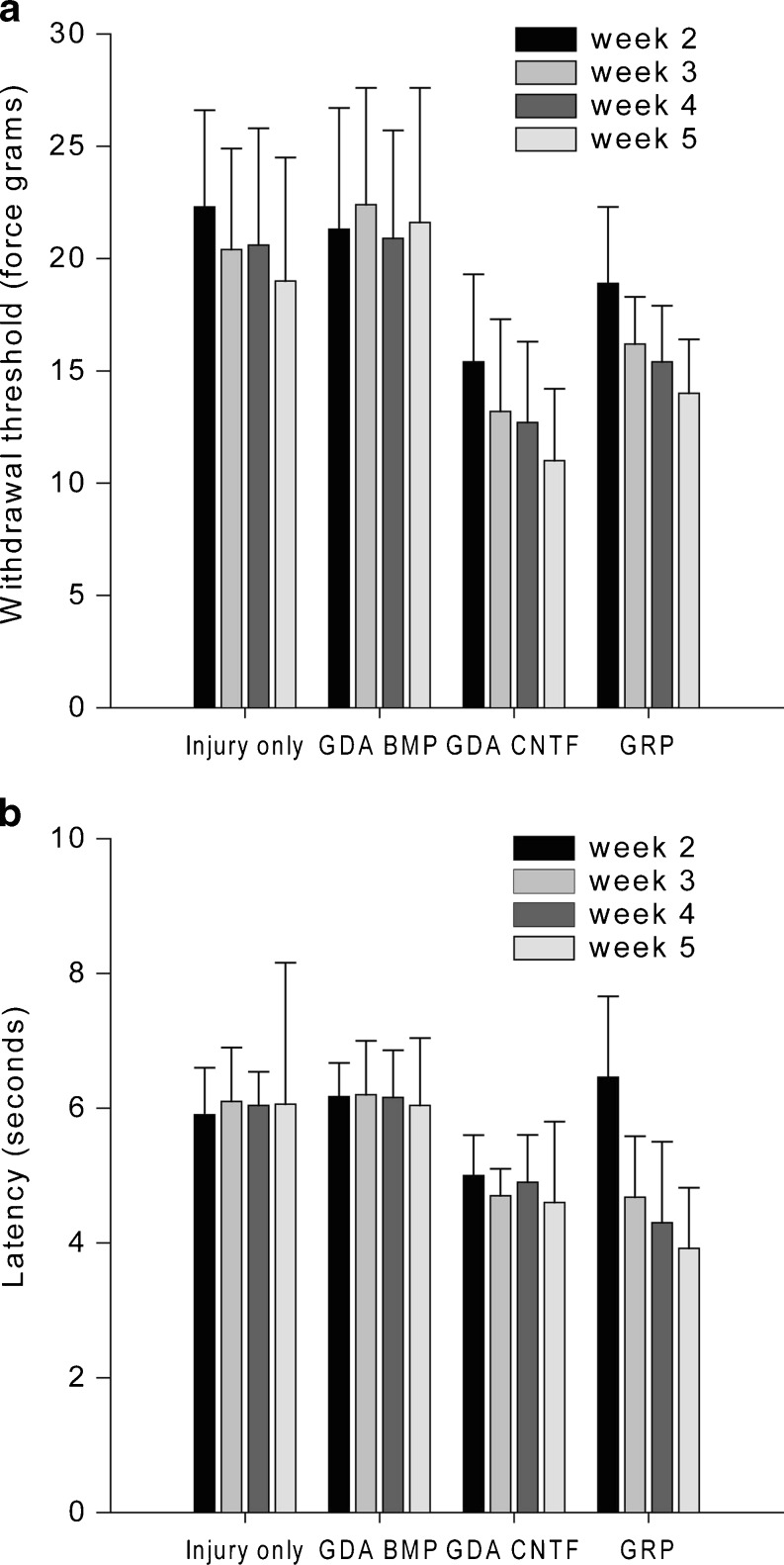Fig. 4.
Von Frey filament and hot-plate analysis of mechanical and thermal allodynia. (a) Withdrawal threshold of the right front paw to a mechanical stimulus (force in grams). Measurements were made 2, 3, 4 or 5 weeks after animals received dorsolateral funiculus lesions and were transplanted withGRP cells, GDAsBMP or GDAsCNTF, or vehicle alone after dorsolateral funiculus injury/transplantation. (b) Latency (in seconds) to paw withdrawal from a heat source. Note that injury alone and GDABMP transplantation do not induce statistically significant mechanical or thermal allodynia at any time point. However, the mechanical threshold and latency to withdrawal from a heat source were both significantly lower in animals transplanted with GRP cells or GDAsCNTF, beginning at 2 and 3 weeks, respectively, post-injury/transplantation. Asterisks denote a statistical difference from time-matched control animals (two-way repeated measures, ANOVA, p < 0.05). Error bars represent 1 SD. BDA = biotinylated dextran amine; BMP = biotinylated dextran amine; CTNF = ciliary neurotrophic factor

